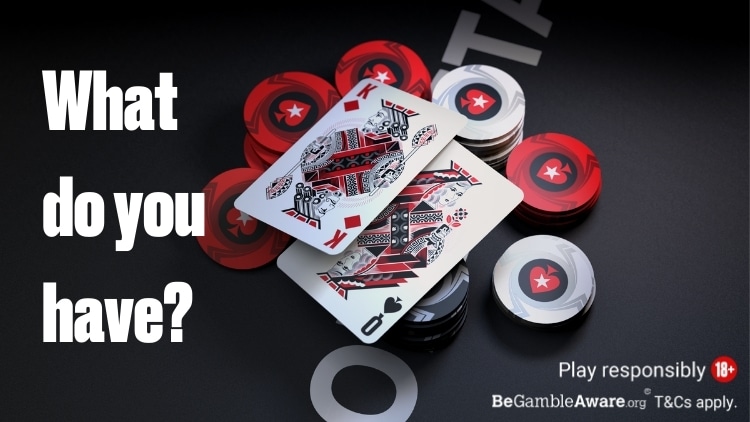We’ve all been there. The river card is dealt, all action has completed, and now it is time for the showdown.
But nothing is happening. No showing is going down.
For online poker players, this is a non-issue. When you play at PokerStars and it’s time for the showdown, the cards are automatically revealed. But in live poker, even experienced players might not know who is supposed to show their cards first.
Sometimes the hesitation before players turn their cards over has something to do with gamesmanship. Or maybe a player has bluffed and gotten called and is embarrassed to show, and now is hoping not to have to reveal his cards. Often, though, the pre-showdown delay is simply due to confusion — players just don’t know who is supposed to show first.
What’s the rule here? When it is time for the showdown, who shows their cards first? Also, is there any etiquette we should be aware of as well, when it comes to showing your cards at the end of a hand?
Who shows first when there is no betting on the final round?
The rule regarding who shows first is actually not very complicated. What sometimes makes it confusing, though, is the fact that the order can be affected by the action on the final round of betting.
Let’s say you and I are playing Texas hold’em and we are the last two players remaining when the action gets to the river. The dealer deals the card and completes the board. I’m in the big blind and I check, and you decide to check as well from the button.
When the action goes check-check on the end like this, the showdown follows the same order as the betting. The player in the earliest position shows first, then it continues from there clockwise around the table. In this case, I’m in earliest position, so I have to show my hand first. You can then show yours or, if you have lost, you can fold your cards face down and not show.
We’d follow the same procedure if there were others in the hand, too, and it checks around on the river. Starting with the seat left of the dealer button (the small blind), we’d go around the table clockwise with those in the earliest positions showing first in order all the way around to whoever is in last postion.
Who shows first when there is betting on the final round?
Things potentially change, though, if there is betting on the last round. In that case, the showdown rule is that the player who took the last “aggressive” action on the final betting round has to show first.
Aggressive action means betting or raising (not just calling). Once that player shows, it again proceeds clockwise around the table from there with the remaining players showing their cards in turn, or mucking if they have lost and don’t want to show.
Let’s return to the hand the two of us were playing. I’m in the big blind, remember, and after the river card is dealt let’s say I check. You then bet and I call. In this case, since you made the last aggressive action (by betting) you are supposed to show first, then I can either show or muck.
Again, if there are several players still in the hand, the procedure is the same. Whoever made the last bet or raise on the river that got called is the one who shows first, then action proceeds clockwise from that person around the table with players showing their cards in turn.
By the way, there is no rule against showing your cards early. Unlike during a hand when acting out of order is a big no-no, at showdown it is perfectly fine to flip your cards over before it is your turn. In home games, for example, you often see all of the remaining players simply show their cards at once at the end.
In truth, the showdown rule about order is only there for those times when players aren’t all willing just to show their cards and move on to the next hand.
Have the nuts? Don’t slow roll!
So that’s the rule — simple enough. The player who takes the last aggressive action on the final betting round shows first, unless there is no betting on the last round in which case players show their in the same order as the action starting with the player left of the dealer and going clockwise.
When it comes to etiquette, one thing you don’t want to do on the river is wait around for others to show first when you are holding the nuts — an unbeatable hand. That would be slow rolling, and while it’s not against the rules it will certainly be regarded as unfriendly (at best).
Imagine it’s a four-way hand with the final board showing A♠ J♦ 4♦ 9♣ K♠ . The small blind and big blind both check, a player in middle position bets, and the button calls. The players in the blinds then fold — time for showdown.
Technically the middle position player who led with a bet on the river is supposed to show first, since he was the last aggressor. The button waits and lets him turn over his hand — A♦ K♦ for two pair. The button then flips over his hand — Q♦ 10♠ for a Broadway straight. The button has the nuts, and had chosen just to call the middle position player’s river bet hoping that the blinds might call or raise.
This is a case, though, where the button should just flip his cards over right away once the last player folded and the action ended. By waiting, he let the middle position player think he might have a winner with his top two before dashing his hopes. Don’t slow roll like that… think how you’d feel if someone did that to you!
The more you know
There are multiple reasons why it is good to know the rule about who shows first at showdown.
For one, it helps keep the game moving, which everyone likes.
Secondly, if you know the rule, you can avoid showing your cards in situations where you don’t have to, and thereby avoid unnecessarily giving away information about how you play. If you don’t have to show first and your opponent does, and your opponent turns over a winning hand, you can muck and keep that info to yourself.
That said, be careful not to be too hasty about mucking without showing. Even experienced players sometimes misread their hands. If you are new to live poker, you might be better off just showing your cards, anyway, especially if you have any doubt at all in your mind about whether or not you’ve won or lost.
Back to Top







